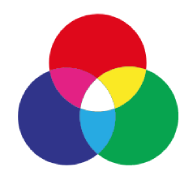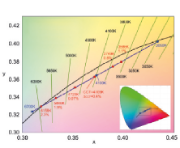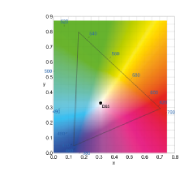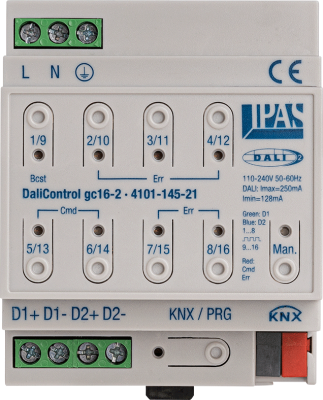DaliControl gc16-2
Order no. 4101-145-21
Dimensions (L x W x H) 90 / 71 / 58 mm
With the DaliControl gc16-2, IPAS offers another KNX device solution for applications in which a large number of DALI lights need to be switched cost-effectively in groups. The DaliControl gc16-2 can control two DALI segments. 64 DALI lights can be connected to each segment, each of which can be assigned to up to 16 groups. The DaliControl gc16-2 is certified as a Single Master DALI 2.
The IPAS DALI Gateway DaliControl gc16-2 is a single-master application controller for controlling electronic ballasts with DALI interface via the KNX installation bus.
The device transforms switching and dimming commands from the connected KNX system into corresponding DALI telegrams, or status and event information from the DALI bus into KNX telegrams.
The DaliControl gc16-2 has a DALI output which can control up to 64/128 ECGs.
The required power supply for the connected ECGs is provided directly from the device. Additional DALI power supplies are not required.
The device is available in a 4 DU wide DIN rail housing for direct installation in an electrical distribution board. The bus connection is made via a standard bus connector. Mains and DALI lines are connected via screw terminals on the device.
Per gateway the ECGs can be controlled in 16/32 groups. In addition to the group control the DaliControl gc16-2 also allows individual control of up to 64/128 ECGs.



This function makes it possible to switch off groups with a time delay. The times are adjustable. The function can be locked via an object and in this state, the groups are in normal mode.

This function counts the switch-on times of groups and/or ECGs. The counter reading can be used as threshold value for an alarm notification, for example when the service life has been reached.

Error rates are calculated based on the number of lamp and ECG errors and the number of all connected lamps. Threshold values for errors and error rates can be defined. An alarm is triggered when these are reached.

With this module it is possible to program and recall up to 16 internal light scenes. A scene is invoked via a 1 Byte scene object. For DALI operating devices DT-8 the currently selected light colour or colour temperature is also saved in the scene and adjusted accordingly when the scene is invoked.

The power supply of a group can be switched off via a KNX object when the corresponding group is switched off (standby mode). The lamp and ECG error test starts again after the power is switched back on.

With the time control module, a defined light colour and, if necessary, a light value can be set automatically depending on the time and date. Up to 16 different templates are available for this purpose. A typical application is the adjustment of the colour temperature over the course of the day, which has positive effects on our well-being.

This function enables the easy replacement of a defective DALI ECG. One defective ECG can be replaced with a new one without DALI programming.






The cross-functional DALI Bus (DALI = Digital Addressable Lighting Interface) is a system used to control electronic ballasts (ECGs) in lighting technology. The specifications of the DALI communication interface are defined in the international norm EN62386. Just like the KNX protocol, the DALI protocol is standardised. The Dali Association DiiA, based in the United States, is the organisation that defines and maintains DALI standards.

Traditionally, a DALI Master controls one DALI segment. A DALI segment consists of up to 64 DALI lights, which can be switched and dimmed in up to 16 groups.

Programmed DALI ECGs are accessible via the short address in a DALI segment and can thus be controlled in the DaliControl gateway from the KNX (except color control via DT-8).

Powerful controllers allow the integration of 2 DALI segments in one device. This means that a total of 2 x 64 DALI lights, which are assigned to a total of 2x16 groups, can be controlled.

The DALI installation is simple. The wiring usually consists of a 5-core cable (typically 5x1.5 m2 NYM) that connects all 64 lights in parallel. 3 cores, L, N and PE, are used for the energy supply and the remaining 2 cores are used for the DALI bus.

According to DALI protocol, a Broadcast command is a central switch command that is independent of group assignments. DaliControl devices use DALI broadcast commands for switching on and off, value setting, color values (RGB or HSV) and color temperature via KNX objects. Broadcast does not require DALI assignment.

A major advantage of DALI technology over KNX lighting control is the reporting and acknowledgment of lamp and ECG errors by the DALI system. This information is of vital importance for operational safety and lighting management.

IIPAS DaliControl interfaces are ETS5 and ETS6 compatible. The programming of DALI lights is assigned via the Device Control App (DCA). The DCA is integrated into the ETS once and includes all functions for programming the DALI components in the associated DALI segment.

In installation systems in which DALI lights are controlled via the KNX installation, the DALI KNX interface constitutes the DALI Master. Like the KNX Bus, the DALI Bus is a two-wire bus.

The ETS configuration is backed up within the project in the ETS. The DALI configuration can be backed up as an XML file and imported and programmed again via the ETS.

RGBWAF colour channels
With this type of colour control, the colour perception is based on the additive mixing of the basic colours red, green and blue. In theory, the overlapping of these colours results in the colour perception “white“. In practical terms, however, it is very difficult to create a pure white tone. For this reason an additional channel for white colour can be added (RGBW). According to DALI standard IEC 62386-202, up to 6 channels (RGBWAF) can be used for colour perception in this model. In practice, three independent channels for driving the lights in red, green and blue and a channel for the color white are used. In connection with the KNX, many different colours can be easily achieved through different mixing ratios.
KNX data types for RGBW control
When using DALI DT8 lights, the color mixing takes place in the DALI ECG, so that the color information can be transmitted from the KNX side with only one object. The KNX DPT 251.600, a 6 byte data object, contains all the color information for the additive RGBW color mixing. In addition, the color range can be set via KNX 4 Bit relative dimming (DPT 3.7) or via KNX value setting (DPT 5.1).

HSV colour control
An alternative to the RGBW colour space is colour definition based on hue (H), saturation (S) and brightness values (V). This type of colour definition is often preferred for the artistic aspects of colour perception and is technically possible with only 3 objects. The colour tone is set as a value between 0° and 360°, therefore reaching all colours in the colour circle. The values for saturation and intensity (dark phase) are entered between 0 and 100%.
KNX data types for HVS control
When using DALI DT8 lights, the color mixing via HSV is also performed in the DALI ECG. The color information is transmitted from the KNX side via an angle between 0 and 360º (DPT5.3 angle). The color circle in the room is shifted via saturation (DPT 5.1) and the dimming value (also DPT 5.1). In addition, the color range can be set via standard 4Bit relative dimming (DPT 3.7) or via value setting (DPT 5.1)

Tunable White
Over thousands of years the human organism has become accustomed to a repetitive daily cycle: At night it is dark and thus the time for our organism to relax and regenerate through sleep so that we have new energy for the following day. In the morning when the sun rises and the light has a warm tone, we get up and get ready for the day. When the sun is at its zenith around midday, the colour temperature cools down. Once the sun starts moving back towards the horizon in the afternoon, the colour temperature starts to rise again. Research has shown that the human organism functions best if it is exposed to the natural colour temperature of the specific time of day. With rapidly developing LED technology it is now possible to replicate the cyclical change of light colour temperature in the rooms in which we live and work.
The very small LED format makes it possible to integrate two different LED types, cool white and warm white, into one casing, thereby giving the impression that a lamp emits two colour temperatures. In connection with a DALI ECG those two colour temperatures are mixed dynamically. This means that almost any colour temperature can be set within a defined range between e.g. 2500 and 4500 Kelvin, simply by transmitting one information, the desired colour temperature, to the DALI ECG.
KNX data types for CW control
When using DALI DT8 lights, almost any colour temperature (CW) can be set in a defined range of, for example, 2500 to 6000 Kelvin by transmitting only one information, the desired colour temperature, to the DALI ECG. From the KNX side, this colour temperature information is transmitted via the DPT 7,600. In addition the colour temperature range and brightness can be set via the objects 4Bit relative dimming (DPT 3.7) or value setting (DPT 5.1).

x/y – Colour Space
Another way of describing a colour is by defining a 3-dimensional colour space. In this colour space the following formula applies: x+y+z=1. A simple conversion shows that x+y =1-z. So if x and y are known, z can be easily calculated. A vector can point anywhere in the colour space and thereby define the colour. By having to define only the coordinates x and y, only two pieces of information are required to describe a colour.
The light control processes via colour temperature (Tunable White), RGBW and the coordinates x/y have all been defined by the DIIA in the new data point type 8. In practical terms, the DALI DT-8 reduces the number of required light control channels to a minimum thereby also reducing costs. Easy installation, low costs per light channel and the numerous and complex options to create customised light settings based on colour, brightness and intensity are amongst the most important reasons in favour of using DALI in lighting technology.
KKNX data types for x/y control
When using DALI DT8 lights, the room coordinates are transmitted in a value range from 0 to 65535 via the 2 byte DPT 7.1
New firmware 0.3.0
Firmware 0.3.0 also introduces a new ETS application and a new DCA.
The new application is named "Plus".
Single ECG control
Special attention is now given to the possibility of single ECG control.
Single ECGs can be addressed in scenes, in schedules or via KNX communication objects.
ECG operating modes (normal, continuous, night and panic mode)
The individual ECGs can be used in different operating modes, just like the groups.
Counting the operating hours of the individual ECGs
The individual ECGs can be used in different operating modes, just like the groups.
Export and import of scenes
In order to be able to use configured scenes easily in other projects, the possibility of importing and exporting has been implemented.
Editing and exporting/importing description texts
All description texts of the groups or the single ECGs can be edited now additionally centrally. There, the texts can also be easily imported or exported from other file formats.
Manual override in schedules
An automatic schedule can be manually overridden for certain requirements.
Newsletter Registration
Informed at all times.
Register now
Questions or comments?
Contact us!
Contact form






